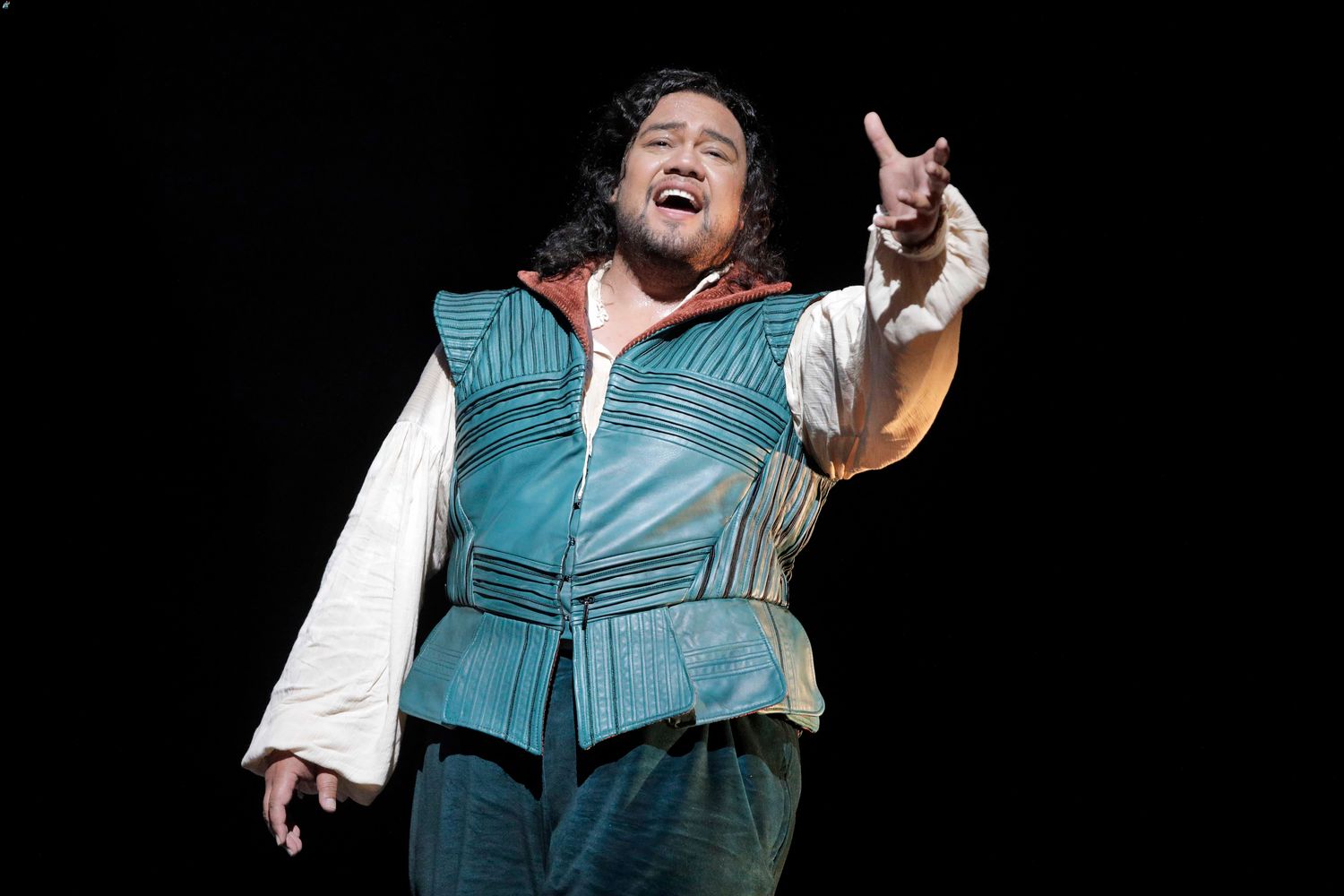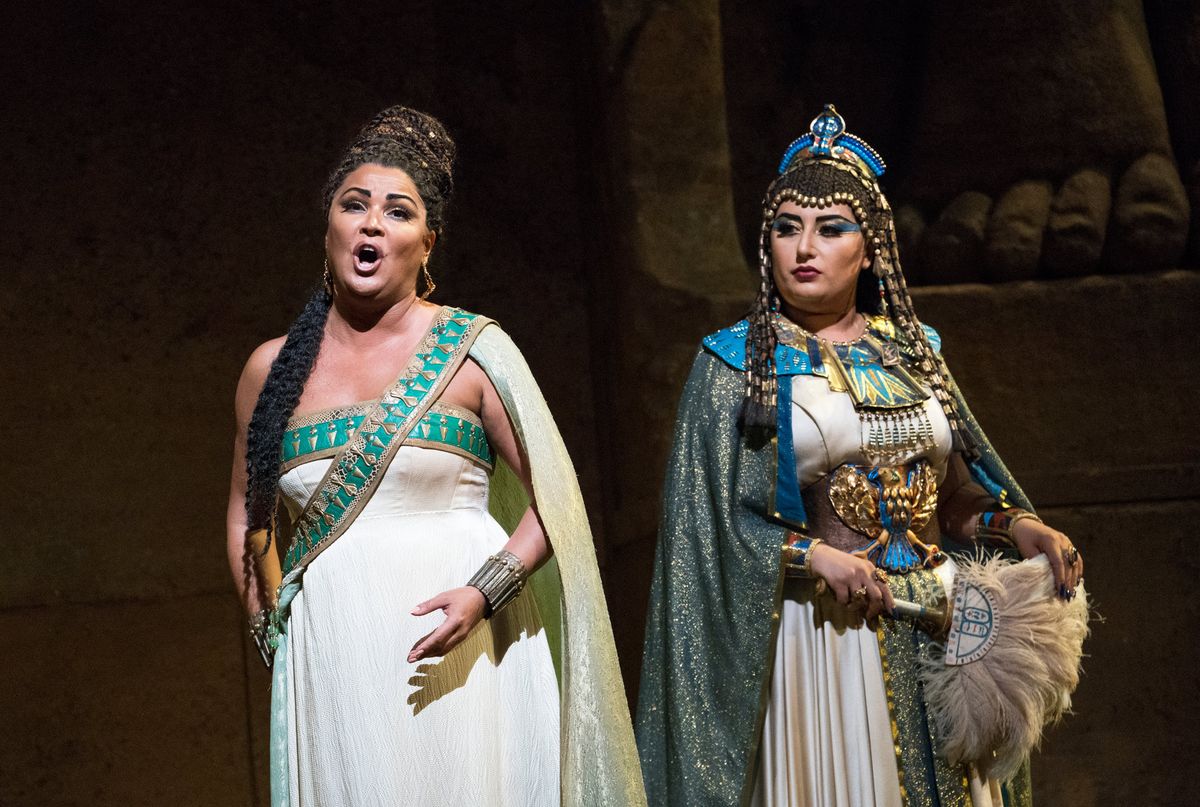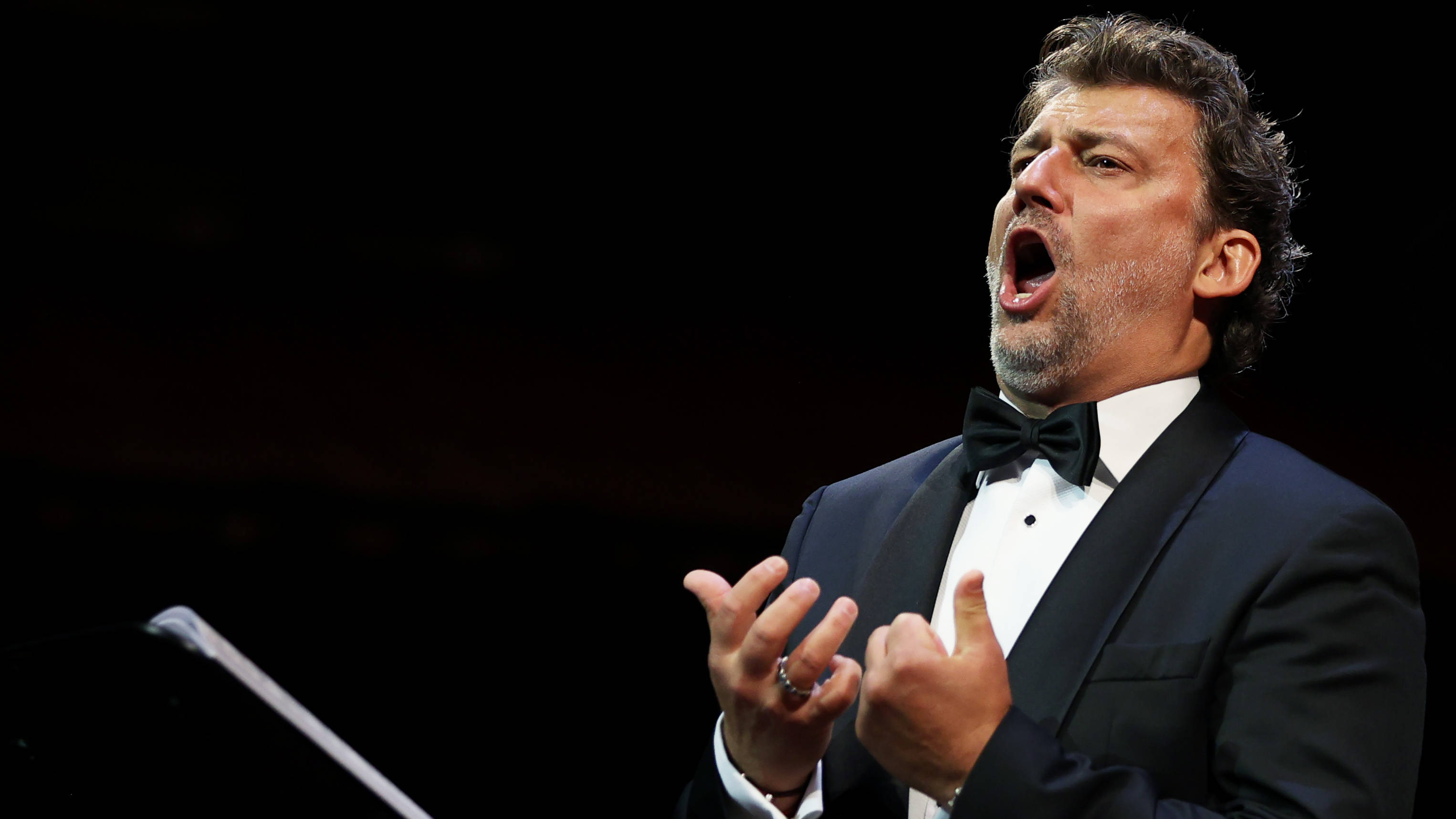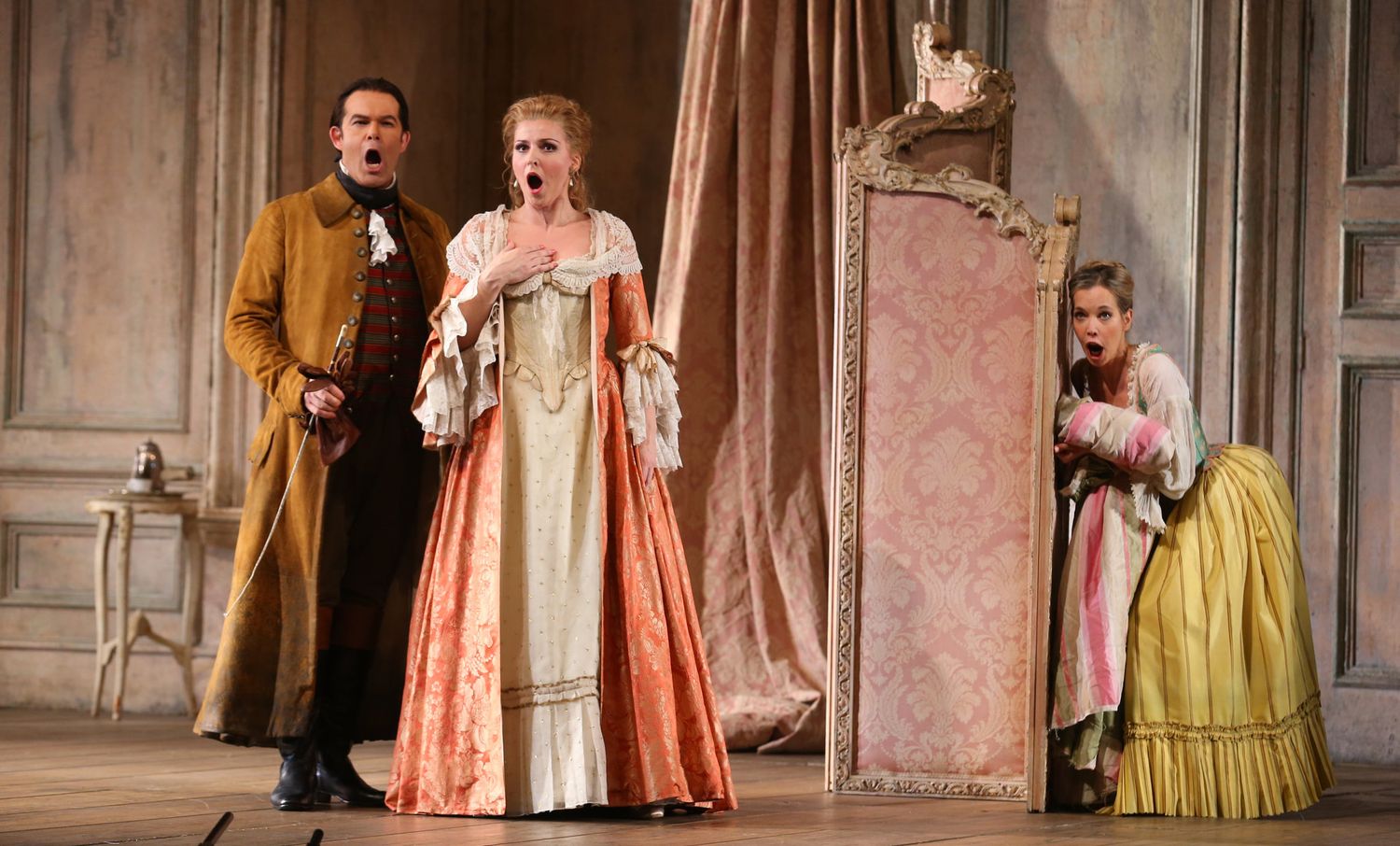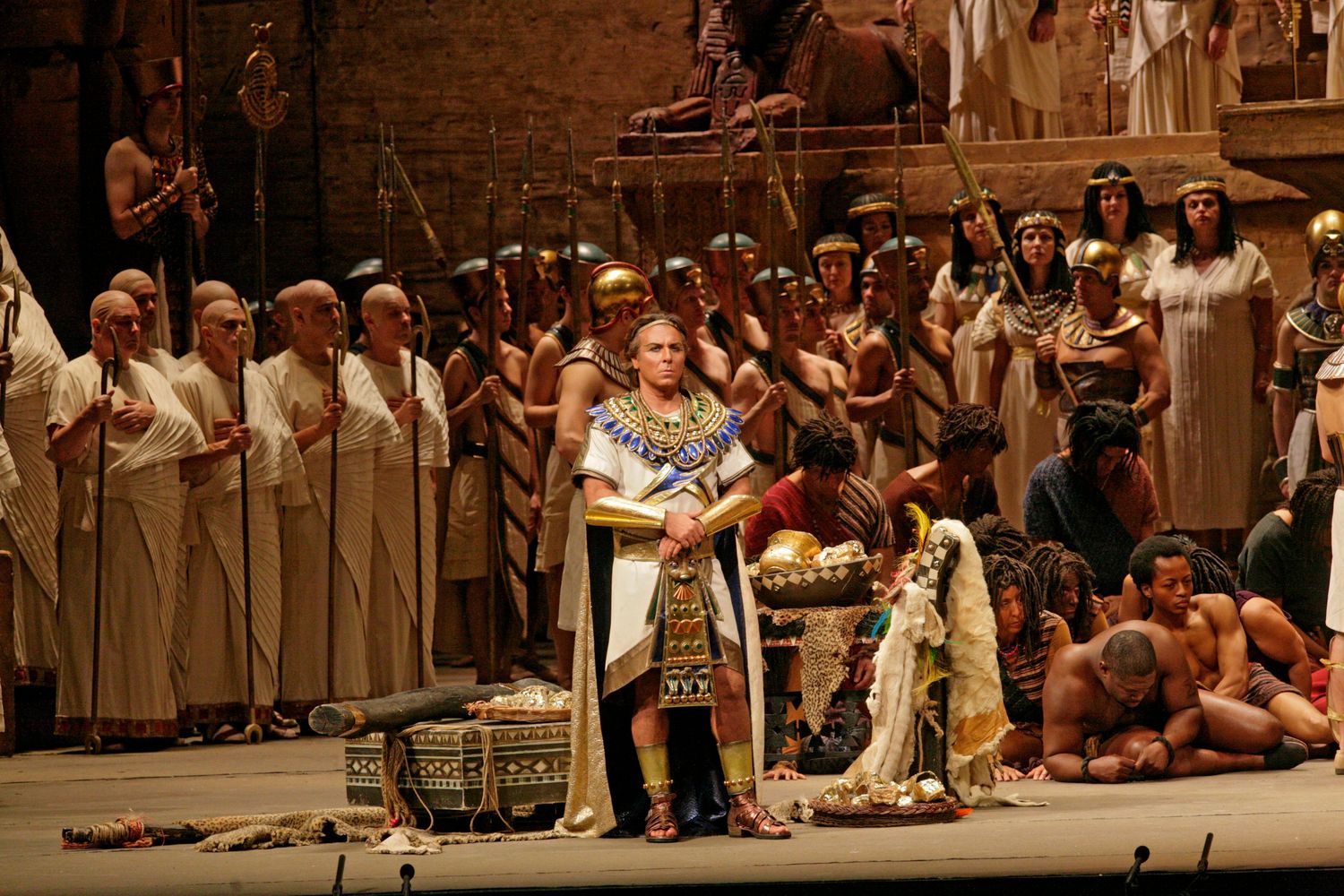Home>Events & Info>Opera>What Is The Storyline Of The Opera La Boheme
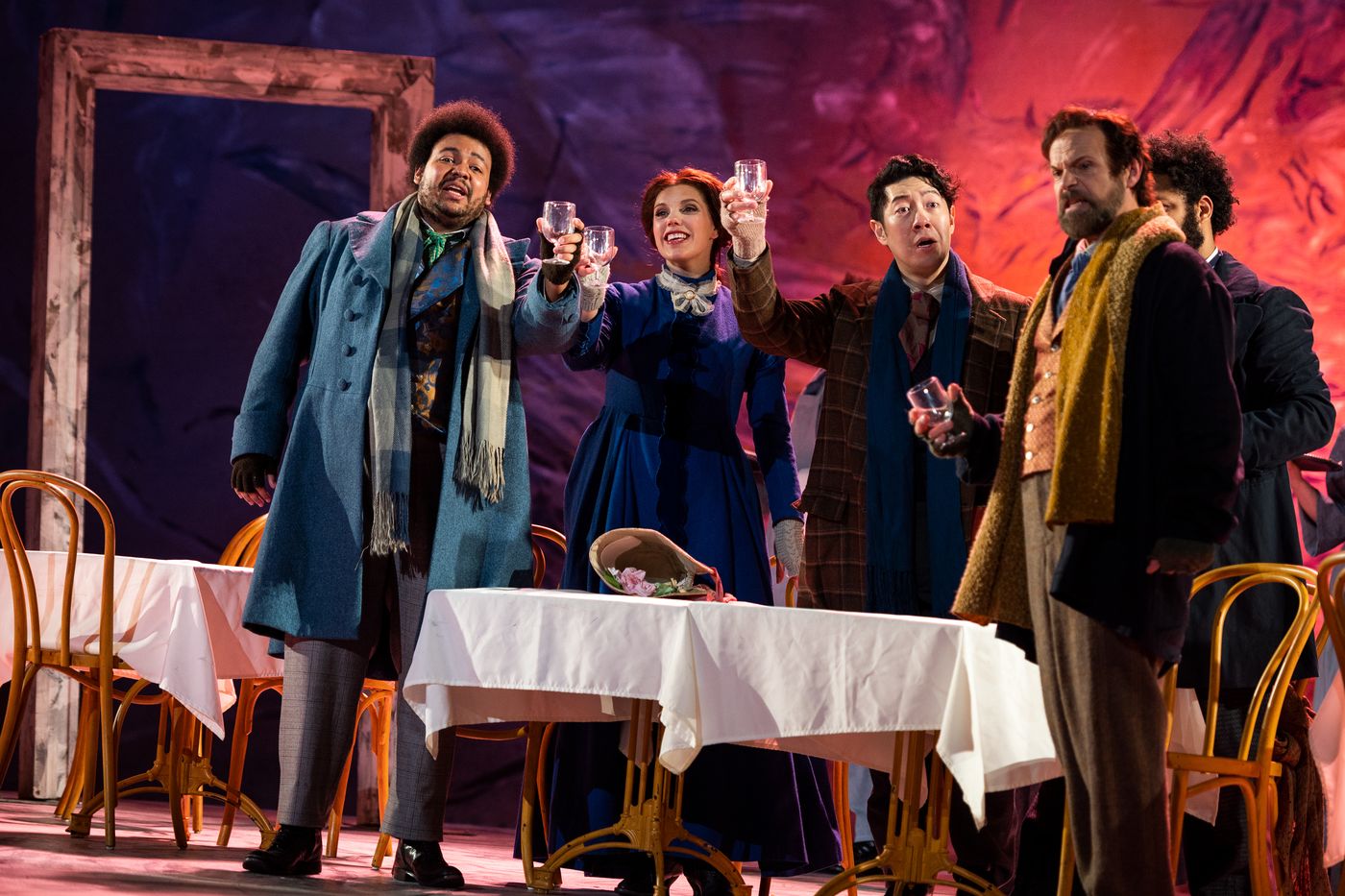

Opera
What Is The Storyline Of The Opera La Boheme
Published: January 5, 2024
Discover the enchanting storyline of the beloved opera La Boheme. Immerse yourself in the world of love, friendship, and tragedy in this iconic opera.
(Many of the links in this article redirect to a specific reviewed product. Your purchase of these products through affiliate links helps to generate commission for AudioLover.com, at no extra cost. Learn more)
Table of Contents
Introduction
Welcome to the captivating world of opera, where music and storytelling combine to create magical and emotional experiences. One of the most beloved and influential operas of all time is “La Boheme,” which was composed by Giacomo Puccini. Set in bohemian Paris in the 19th century, this opera has captured the hearts of audiences worldwide with its poignant story and beautiful music.
“La Boheme” tells the tale of young artists struggling to make a living and finding love in an era of poverty and artistic revolution. The opera skillfully portrays the whirlwind of emotions experienced by the characters as they navigate the complexities of life, love, and friendship. Puccini’s masterful composition, coupled with the poignant libretto by Luigi Illica and Giuseppe Giacosa, creates a timeless work that resonates with audiences to this day.
Throughout the four acts of “La Boheme,” audiences are taken on a journey through the real struggles and experiences of the characters. From the small, cold garret where the artists live to the bustling streets of Paris, each act reveals a different aspect of their lives and passions. As the story unfolds, we witness both the joys and hardships that the characters face, exploring themes of love, loss, and the pursuit of artistic expression.
Puccini’s score is a true masterpiece, employing lush melodies and intricate harmonies to convey the depth of emotion felt by the characters. From the soaring arias to the tender duets, the music of “La Boheme” captures the essence of each moment and elevates the storytelling to new heights.
Whether you’re a seasoned opera enthusiast or new to the world of classical music, “La Boheme” is a must-see. Its timeless story, memorable characters, and breathtaking music have cemented its place in the opera repertoire. So sit back, immerse yourself in the world of bohemian Paris, and let the magic of “La Boheme” captivate your heart and soul.
Historical Background of La Boheme
Set in the vibrant and bohemian Paris of the 19th century, “La Boheme” offers a glimpse into the world of struggling artists, their dreams, and their pursuit of love and happiness. The opera’s storyline is influenced by the social and cultural climate of the time, as well as the personal experiences of its creators.
During the 19th century, Paris was a hub of artistic and intellectual activity. The city served as a gathering place for artists, musicians, writers, and thinkers who sought to challenge conventional norms and create groundbreaking works. This environment of innovation and artistic freedom greatly influenced the characters and themes depicted in “La Boheme.”
The librettists, Luigi Illica and Giuseppe Giacosa, drew inspiration from Henri Murger’s collection of stories titled “Scenes de la vie de boheme.” These stories shed light on the struggles and aspirations of a group of bohemian artists living in Paris. Puccini, known for his ability to bring human emotion to life through music, was immediately captivated by the material and recognized its potential to create a deeply moving opera.
“La Boheme” made its premiere in Turin in 1896 and was met with mixed reactions, but over time, it gained immense popularity and became a staple in the operatic repertoire. The opera’s success can be attributed not only to its captivating storyline but also to Puccini’s brilliant composition, which beautifully captures the essence of the bohemian lifestyle and the emotions of its characters.
As the 19th century progressed, so did the wave of artistic movements and ideologies that influenced the characters in “La Boheme.” The opera reflects the ideals of romanticism, with its emphasis on individualism, passion, and pursuit of freedom. The characters in “La Boheme” are driven by their love for art and their desire to break free from societal constraints.
Additionally, the opera reflects the changing social dynamics of the time. Amidst the fervor of revolution and social upheaval, “La Boheme” presents a heartfelt portrayal of the struggles faced by impoverished artists. It sheds light on the challenges of living in poverty and the sacrifices made in the pursuit of artistic expression.
Today, “La Boheme” remains a timeless masterpiece that continues to captivate audiences around the world. It serves as a reminder that although times may change, the universal themes of love, friendship, and the pursuit of dreams resonate with audiences across generations.
Act 1: The Garret
The first act of “La Boheme” introduces us to a group of struggling artists living in a small garret in Paris. The scene is set in a frigid winter, emphasizing the harsh conditions in which they reside. As the opera begins, we meet the poet Rodolfo and the painter Marcello, the central characters of the story.
Rodolfo is a romantic and ambitious poet, constantly seeking inspiration for his work. Marcello, on the other hand, is a bohemian artist who is as passionate about his art as he is about his tumultuous love life. The two friends share a deep bond, founded on their love for creativity and their shared experiences of poverty.
As they struggle to stay warm and make ends meet, their close-knit group of friends joins them in their garret. Colline, a philosopher, and Schaunard, a musician, complete the ensemble of characters. The camaraderie and banter between the friends provide moments of humor and levity amidst the hardships they face.
In this act, we are introduced to the young seamstress Mimi, who comes to the garret seeking a light for her candle. Rodolfo is instantly captivated by her beauty and her delicate nature. They share a heartfelt exchange, where they reveal personal details about themselves and their aspirations. This blossoming connection sets the stage for their love story to unfold.
The music of the first act beautifully echoes the emotions of the characters, from Rodolfo’s tender aria expressing his admiration for Mimi to the lively chorus of friends coming together in their shared passion for art. Puccini’s gift for melodic storytelling shines through, making this act a captivating and emotional experience for the audience.
As Act 1 concludes, we are left with the anticipation of what lies ahead for these young, passionate artists. The stage is set for the development of both love and tragedy, as the story of “La Boheme” continues to unfold.
Act 2: Cafe Momus
The second act of “La Boheme” transports the audience to the bustling streets of Paris. It is Christmas Eve, and the scene is set at the lively Cafe Momus, a popular meeting place for artists, students, and the fashionable elite of the city. This act showcases the vivacity and diversity of Parisian society in the 19th century.
Rodolfo and Marcello, accompanied by their friends, eagerly embrace the festive atmosphere of the cafe. Street vendors, children, and couples fill the streets with their laughter and excitement. The stage is vibrant with colorful costumes, opulent decorations, and the sounds of bustling activity.
Amidst the revelry, Rodolfo introduces his friends to Mimi, whom he met earlier at the garret. Marcello, ever the flirt, finds himself entangled with the flirtatious and coquettish Musetta, a former lover with whom he shares a tumultuous relationship. Their exchanges provide moments of humor and drama, adding depth to the unfolding story.
Musetta’s captivating charm and radiant presence take center stage during this act. As she enters the cafe, all eyes are on her, and her show-stopping aria “Quando me’n vo'” (known as Musetta’s Waltz) captivates both the characters on stage and the audience. The scene becomes a swirling dance of passion, jealousy, and desire.
The music in this act not only reflects the energetic atmosphere of the cafe but also serves as a backdrop to the emotional complexities of the characters. Puccini’s compositions skillfully intertwine the merriment of the Christmas celebrations with the tumultuous feelings of love and longing.
As Act 2 concludes, the relationships between the characters become further entangled, setting the stage for the emotional turmoil that awaits in the subsequent acts. The festive exuberance of Cafe Momus gives way to deeper introspection and the fragility of human relationships, leaving the audience eagerly anticipating the next chapter of this captivating opera.
Act 3: The Streets of Paris
The third act of “La Boheme” takes us from the bustling atmosphere of Cafe Momus to the cold and desolate streets of Paris. The mood shifts from vibrant and festive to one of melancholy and introspection as the characters grapple with the challenges of their lives.
Set on a snowy winter morning, this act opens with a poignant duet between Rodolfo and Mimi. Their relationship has grown, yet it is fraught with the hardships of poverty and illness. As they wander the streets, Mimi’s declining health becomes apparent, and Rodolfo is torn between his love for her and the realization that he cannot provide the care and stability she needs.
The scene also depicts the struggles of the other characters. Marcello and Musetta’s relationship has deteriorated, leading to jealousy and resentment. Colline and Schaunard, though not central to the love story, provide moments of comic relief and insight into the perils of their bohemian lifestyle.
In this act, Puccini’s music captures the raw emotions of the characters. From the hauntingly beautiful melodies in the duet between Rodolfo and Mimi to the powerful ensemble scenes, the music evokes a sense of longing, heartache, and the fragility of life.
As Act 3 reaches its climax, Mimi’s declining health becomes a central focus. The characters grapple with the reality of poverty and the inability to provide proper medical care for their loved ones. This act serves as a poignant reminder of the harsh realities faced by those living in poverty, highlighting the stark contrast between the joyful celebrations of Act 2 and the somberness of Act 3.
As the act comes to a close, the audience is left emotionally moved by the struggles and sacrifices of the characters. The streets of Paris serve as a metaphor for the challenges they face, symbolizing the harshness of their reality and the fragility of their dreams.
Act 3 sets the stage for the emotional climax of “La Boheme” in the final act, where the characters must confront the consequences of their choices, their loves, and their losses. It leaves the audience on the edge of their seats, eagerly awaiting the resolution of this tragic and beautiful tale.
Act 4: The Attic
The final act of “La Boheme” brings us back to the familiar setting of the garret, where the story began. The mood is somber, and the scene is filled with a sense of impending tragedy and heartache.
As Act 4 opens, Mimi’s health has deteriorated significantly, and she is brought back to the garret by her friends in a desperate attempt to provide her with some comfort in her final moments. The characters grapple with a mix of emotions – love, guilt, and a deep sense of loss.
Rodolfo is consumed by grief and guilt, as he comes to terms with the fact that he can no longer provide Mimi with the care she needs. Their love remains strong, but the harsh reality of poverty and illness has taken its toll on both of them.
The other characters, Marcello, Musetta, Colline, and Schaunard, also face the consequences of their choices. Marcello realizes that his love for Musetta is still strong, and Musetta, overcome with guilt and regret, yearns for reconciliation.
Puccini’s masterful composition in this act encapsulates the deep emotions and the sense of loss experienced by the characters. From Mimi’s hauntingly beautiful aria to the ensemble pieces that bring together the voices of all the characters, the music takes the audience on an emotional journey, tugging at their heartstrings with every note.
The final moments of “La Boheme” are heart-wrenching as Mimi succumbs to her illness. The characters are left devastated and mourning the loss of their beloved friend. The opera concludes with a powerful finale, leaving the audience with a mix of sorrow, reflection, and an appreciation for the beauty and fragility of life.
Act 4 of “La Boheme” serves as a poignant reminder of the transient nature of love and the inevitability of loss. It emphasizes the themes of poverty, sacrifice, and the fleeting nature of happiness. The attic becomes a metaphor for the transience of bohemian life, where dreams are pursued but often shattered by the harsh realities of the world.
As the curtain falls, the audience is left with a sense of catharsis, having experienced the full range of human emotions throughout the opera. “La Boheme” remains a timeless masterpiece that continues to resonate with audiences, reminding us of the power of love, the fragility of life, and the enduring beauty of Puccini’s music.
Conclusion
“La Boheme” is a timeless opera that has captivated audiences for over a century. From its humble beginnings in the garret to the vibrant streets of Paris, the opera takes us on a journey through the lives of struggling artists, their dreams, and the bittersweet nature of love and loss.
Puccini’s exquisite composition, along with the poignant libretto by Illica and Giacosa, brings the characters and their emotions to life. The music beautifully captures the passion, joy, and heartache of the characters, leaving a lasting impact on all who experience it.
The opera’s historical background adds depth to the storyline, reflecting the spirit of artistic revolution and social change that characterized the 19th century. It explores themes of poverty, friendship, and the pursuit of artistic expression, providing insights into the struggles faced by artists of that era.
Each act of “La Boheme” paints a vivid picture of the characters’ lives and emotions. From the garret, their humble abode, to the lively atmosphere of Cafe Momus, and finally back to the garret in Act 4, the opera takes us on an emotional rollercoaster, evoking a range of emotions.
Through the story of Rodolfo and Mimi’s ill-fated love, we witness the fragility of human relationships and the impact of poverty on their lives. The other characters, such as Marcello, Musetta, Colline, and Schaunard, add depth and complexity to the narrative, further captivating the audience.
As the final notes of “La Boheme” linger in the air, we are left reflecting on the universal themes it presents. Love, friendship, dreams, and the transient nature of life are all brought to the forefront, reminding us of the power and beauty of opera as an art form.
Whether you are an ardent opera fan or a newcomer to the world of classical music, “La Boheme” is a must-see. Its timeless story, emotive music, and relatable characters have secured its place as one of the most cherished and performed operas in history.
So, sit back, let the music wash over you, and immerse yourself in the world of “La Boheme.” Experience the joy, the heartache, and the profound beauty of this remarkable masterpiece that continues to touch the hearts and souls of audiences around the globe.


